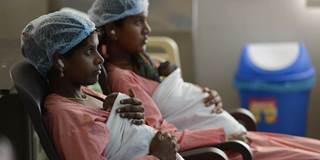Saving Mothers and Newborns
Why are tens of thousands of mothers and newborns still dying every year from preventable causes related to pregnancy and childbirth? Recent research finds reason for hope in a comprehensive, systems-based approach that focuses on transport, communications, and making sure the right resources are in the right place at the right time.
Editors’ note: Listen to the full version of Atul Gawande and Katherine Semrau’s conversation in a special edition of PS Editors’ Podcast. Tune in to all episodes from your favorite podcast app, and subscribe via Apple Podcasts, SoundCloud, or RSS Feed.
Gawande: I was recently lucky enough to be a part of one of the largest studies of maternal and newborn health ever conducted. You led it. In a multiyear trial in Uttar Pradesh, India, you found that even with vastly improved care during the 48 hours around childbirth – when women and newborns face the greatest risk of death and complications – maternal and perinatal mortality did not fall. Given that 99% of maternal deaths from childbirth are considered avoidable, why are so many women still dying?
Semrau: The big killers of moms and babies around the time of childbirth tend to be the same worldwide, whether you are in the US or India. For women, the leading causes are hemorrhages, hypertension (also known as eclampsia), and sepsis (infection). And for newborns, they are asphyxia or breathing difficulties within the first few minutes of delivery, prematurity, and also sepsis.
AG: When you think about it, childbirth is really kind of a brutal thing. Let’s take the example of breathing difficulties, which affect 10% of newborns. How do we address it?
KS: At the bedside, the birth attendant first has to recognize that the child is having difficulty breathing; then they have to ensure that the airway is clear. If it’s not, they have to use a neonatal bag and mask to help that baby start breathing.
